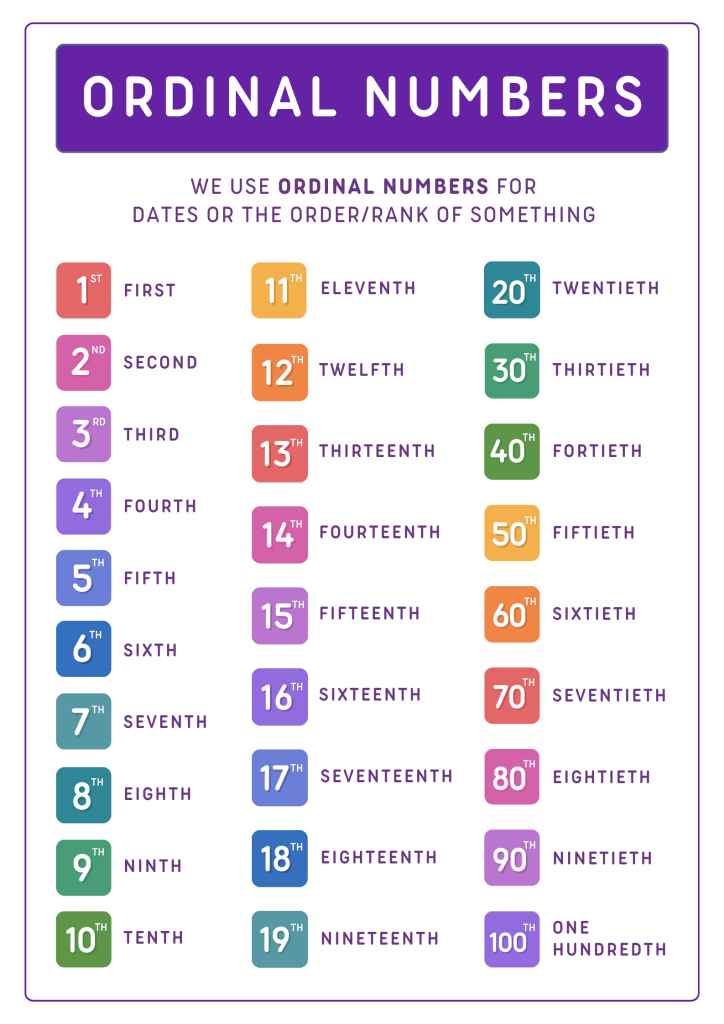Understanding the Concept of Ordinal Numbers
Table of Contents
Introduction
Ordinal Numbers
When it comes to understanding the order or position of elements in a sequence, ordinal numbers play a crucial role. In this article, we will explore the concept of ordinal numbers, learn how to write them, compare them with cardinal numbers, and provide a list of ordinal numbers for reference.
Analogy of Definition
What are Ordinal Numbers?
Ordinal numbers are used to indicate the position or order of elements in a sequence. They differ from cardinal numbers, which represent quantity or counting. For example, in the sequence “first, second, third,” the words “first,” “second,” and “third” are ordinal numbers that indicate the order of the items.
Method
How to Write Ordinal Numbers
To write ordinal numbers, simply add the suffix “-th,” “-st,” “-nd,” or “-rd” to the cardinal number. For example, “1” becomes “first,” “2” becomes “second,” “3” becomes “third,” and so on. This suffix indicates the position of the number in a sequence.
List of Ordinal Numbers

Ordinal Numbers v. Cardinal Numbers
Cardinal numbers represent quantity or counting, such as “one,” “two,” “three,” while ordinal numbers indicate the order or position of elements, such as “first,” “second,” “third.” In essence, cardinal numbers answer the question “how many?” while ordinal numbers answer the question “in what order?”

Examples
Writing Ordinal Numbers
Example: Writing the ordinal number for the cardinal number “5.”
Cardinal Number: 5
Ordinal Number: Fifth
Quiz
Tips and Tricks
1. Understand the Order
Tip: Ordinal numbers indicate the position or order of items in a sequence. Remember that ordinal numbers show “rank” or “placement.”
2. Learn the Basics
Tip: Start by learning the ordinal numbers from first to tenth, and then gradually progress to higher ordinal numbers.
3. Use Everyday Examples
Tip: Relate ordinal numbers to everyday situations, such as describing the order of family members (e.g., “first, second, third child”), or the placement of items (e.g., “first, second, third shelf”).
4. Visualize with Objects
Tip: Use physical objects like blocks, toys, or books to demonstrate ordinal positions. Arrange them in order and label each with its corresponding ordinal number.
5. Practice Counting Order
Tip: Practice counting objects in order using ordinal numbers. For example, line up toys and say, “This is the first toy, this is the second toy, and so on.”
Real life application
Story: “The Ordinal Adventures of Alex and Lily”
Alex and Lily, two curious explorers, encountered various real-life situations where understanding ordinal numbers was essential for navigating their adventures.
Challenge 1: The Treasure Map
While on a treasure hunt, Alex and Lily discovered a map with instructions to find the “5th” tree in the forest. By understanding ordinal numbers, they located the “Fifth” tree and uncovered a hidden clue.
Challenge 2: The Train Schedule
During their travels, Alex and Lily needed to catch the “3rd” train to reach their destination. By recognizing the ordinal number, they boarded the “Third” train and continued their journey.
Challenge 3: The Museum Exhibit
In a museum, Alex and Lily were intrigued by the “7th” exhibit. Understanding ordinal numbers, they explored the “Seventh” exhibit and learned about ancient artifacts.
FAQ's
Like? Share it with your friends
